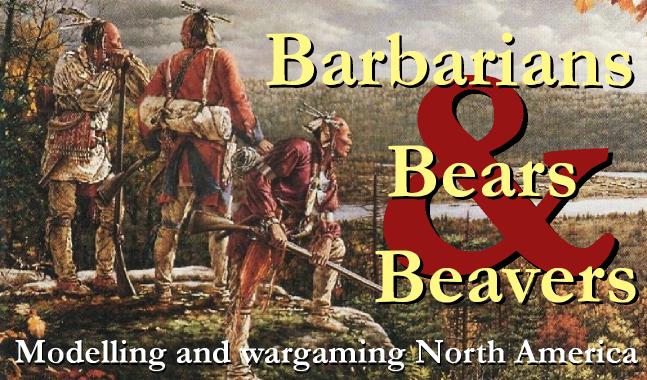



Next thing I did was to start constructing an out building I wanted for inside the fort. I made the basic shape out of artist card and glued them together with super glue. You can use pva but the dry time is much longer. I then cut out and glued thin pieces of balsa to the outside of the construction and scored planking marks into it. After that, I added shingles and the door and window frames etc. The door handle is a shot gun pellet.
I now placed the block house in position on the board. You can build a blockhouse in the same way the out house was built but the one I used was bought from Redoubt Enterprises http://www.redoubtenterprises.com/
I then marked out where I wanted the palisade to go and then started sticking BBQ skewers along its track. I found that it made the structure stronger to tie them together near the top. That done, you can position the out house into place.
I wanted a firing step inside the fort so the next step was to work out how high it was to be and to place balsa supports for it along the inside of the palisade and other areas.
Now you can start to put the basing material down. First thing I did was to place several large rocks into the styrene and then I began painting on the basing material. I used a mixture of sand and brown emulsion paint for this.
You need to start painting now as there are parts you won't be able to get at once the firing step is glued in place. I used a leather brown colour which was then given a black was when it was dry.
That done, you can start building the platform for the firing step.
Finish painting the remaining parts and then when dry, dry brush the whole lot with a cream colour and maybe a little white. Go easy on the white though.
I also dry brush the basing material with an ochre colour and then add some rocky patches with a bit of a white dry brush. Again, go steady with this.
Next step is to flock the base whilst leaving a few bare patches. I also add a few areas of longer grass. All sorts of material for this can be bought from local hobby shops of model railway shops.











That's quite outstanding. And I see you got the music sorted :^).
ReplyDeleteGiles
Yep. Just need to sort how the text flow issues. D'oh!
ReplyDelete